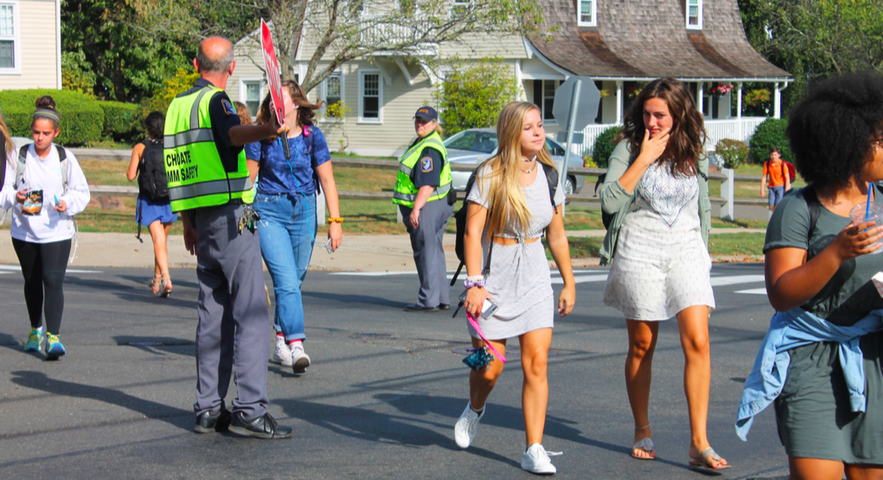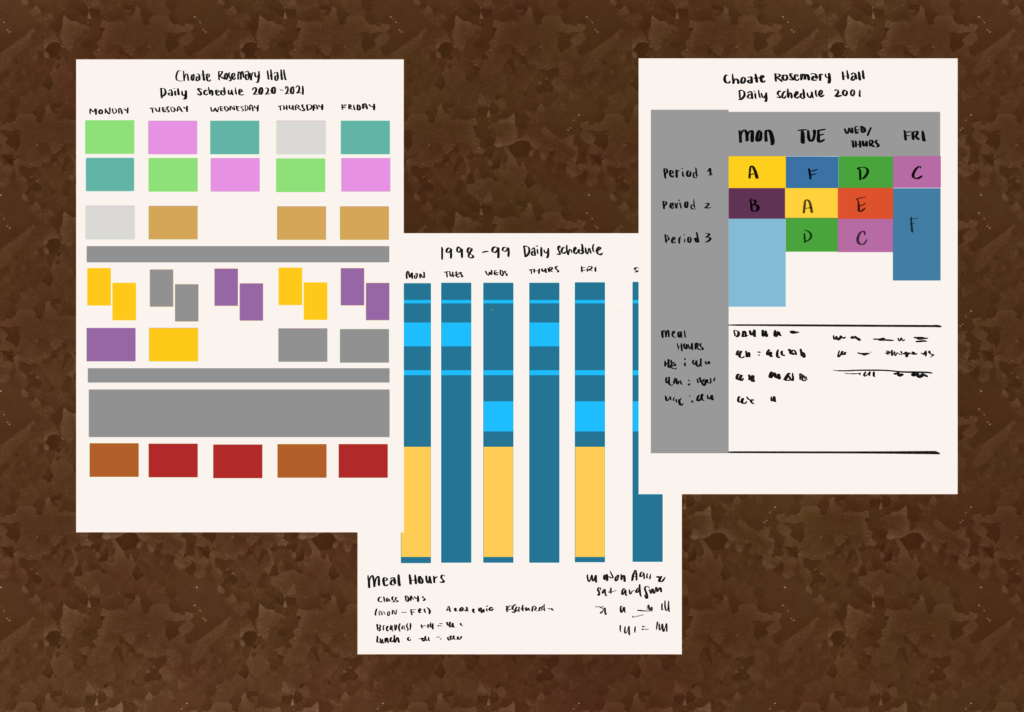
With collaboration between Choate and the Wallingford police, the Safety Report Form was unveiled to improve campus safety.
Although street harassment may seem like a far-off threat, it’s unfortunately one that many Choate students are familiar with. Freshman cross-country runner Claire Yuan ’21 was verbally harassed by a passing car two weeks ago while with three teammates, mere days after stepping foot on campus. “We were coming down from the big road near the cemetery and some kid drove behind us and made a loud noise,” she recalled. “It was really scary and freaked us out. He swore at us and did this two-finger gun thing.”
Girls’ Cross Country co-captain Mehreen Pasha ’18 was running with Yuan when the incident happened. She said, “It was a little shocking because it’s never happened to me personally before and there was no one else on the street, so I didn’t feel completely safe after that.”
Occurrences like these prompted the creation of the Safety Report Form, unveiled this spring in collaboration with Choate Rosemary Hall and the Wallingford police. According to Director of Risk Management, Ms. Risa Vine, “The form was created as a formal way for students to be able to share information anonymously if preferred and in a timely fashion. Prior to the form being available, reports were made either verbally to deans and advisers or by email. The centralized report also allows the school to have consistent information about each incident in one area so that it is available for future reference.”
Once a report is made, it gets forwarded to Ms. Vine and Community Safety. “The police are contacted in cases when an actual threat has been made — or insinuated — towards one of our community members and the report contains enough information for the police to investigate it,” Ms. Vine continued. “To date, none of the reports made have contained offenses that alone can result in arrest or detainment. However, police officers have visited several motorists at their homes to request that they refrain from making additional comments or gestures to Choate community members when driving through campus.”
Ms. Vine stressed the importance of collecting information about the car. “Even a partial license plate number is helpful,” she said. “The Wallingford Police officers can be on the lookout for matches.”
Pasha did just that. “It happened on the same day that they told us to report street harassment at the school meeting, so I tried my best to get the license plate.” She told her coach, Mr. Jim Davidson, who took down the details and contacted security. Another runner reported the harassment through the Safety Report Form.
Regarding the frequency of street harassment over his forty-plus year career at Choate, Mr. Davidson commented: “It has ebbed and flowed over time. My limited experience tells me that it’s slightly lower now. I think that it’s never been a huge problem. Every eight to ten years there would be an incident usually involving high-school aged kids from town making aggressive comments, pushing and shoving. Sometimes at the intersection, cars will nudge forward. I think it’s definitely gotten better.”
Ms. Nancy Miller, another longtime Choate teacher, disagreed. “There is more. No question. I think that the very worst elements of our society feel empowered in a way that they never have before.” She also stated that one’s chance of being harassed is affected by race, gender, and age. “As you know, we’re such a diverse community and that’s to be celebrated, but race definitely plays a huge role in street harassment.”
Mr. Cyrus Cook agreed. “Choaties are harassed as a group but probably Asian or Black students get harassed the most. There’s also definitely gender stuff. Girls get crude remarks. I’ve never experienced anything other than the generic remark. I’ve never been singled out and don’t think I ever will be because I’m probably in a category of person least likely to be harassed.”
Dr. Jessica Pfeil, who joined Choate’s math department last year, added, “The only students that have shared with me about being harassed are females and students of color — based on that, I would say that these groups are more heavily harassed, but it’s more anecdotal.”
Mr. Davidson took the other side. “I think that it’s pretty evenly distributed. I think more male students mentioned to me that they’ve heard aggressive remarks from cars that’s troubling to them. I also think that boys under-report it because they feel like they’re supposed to handle it on their own and that girls are more cued in to reporting it because that’s also what they’re told to do.”
All, however, were positive about the school’s response. Mr. Cook said, “I think that one thing that’s changed is that we’re talking about this a lot more and are more proactive. The school’s relationship with the town seems much better than it was years ago. We now use our own security guards more. There’s an attention towards making the place safer and harassment is a form of unsafeness.”
Ms. Pfeil agreed. “Yes. I approve of the forms. I do think it’s a good idea — we’re getting a detailed account from students that we can pass on to the Wallingford Police so that they’re aware that this is a bigger issue than we think it is. The hope is that the Wallingford Police will be more present in looking out for the students.”
Ms. Miller said, “It’s never been my experience that students are aware of what’s on the portal. Their awareness should be heightened about the form’s availability. But the idea is good.”




